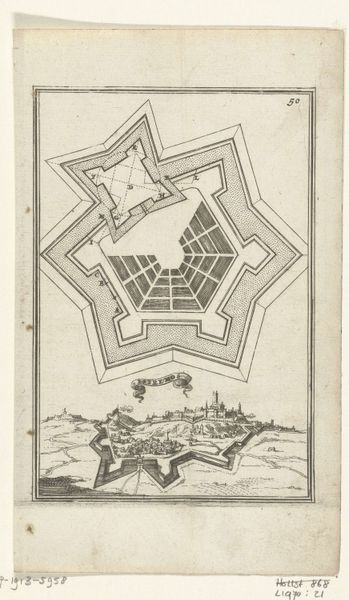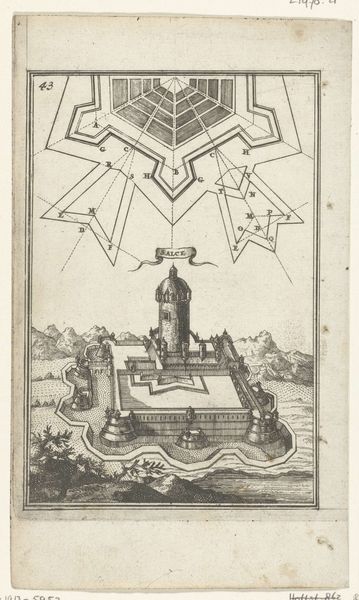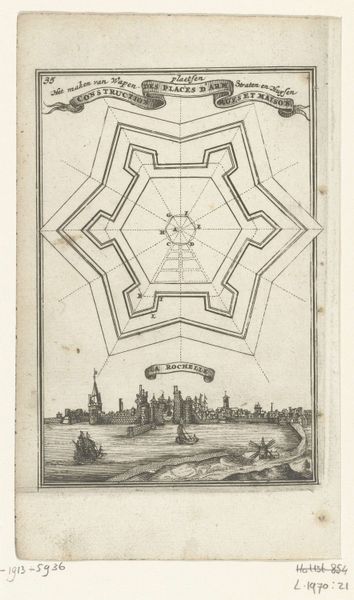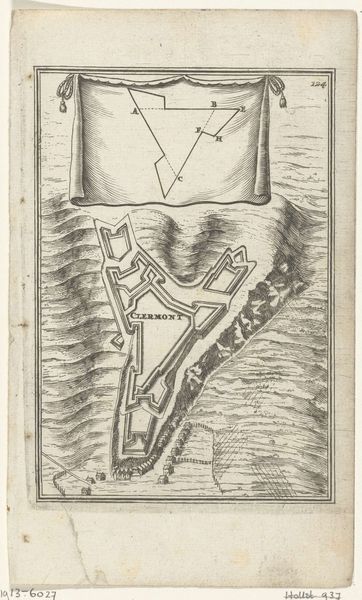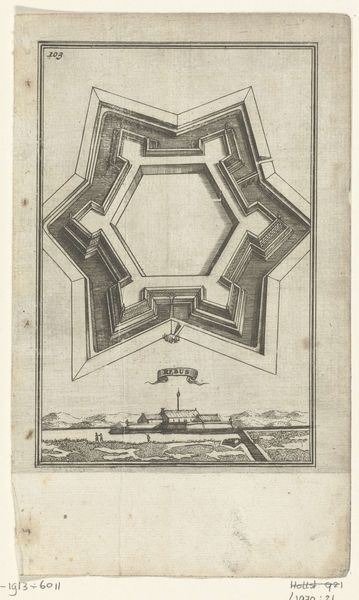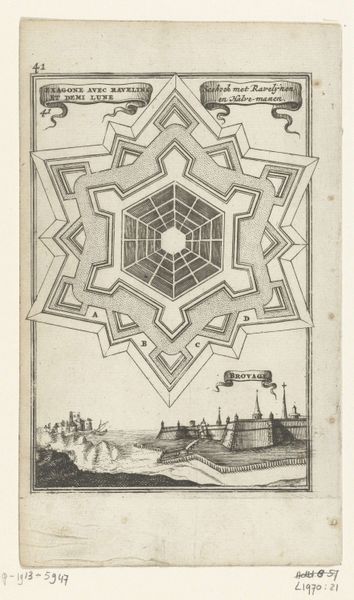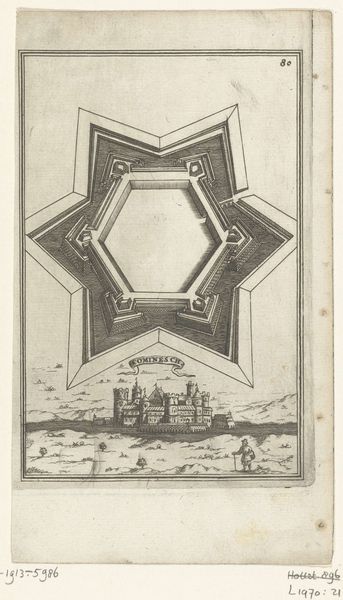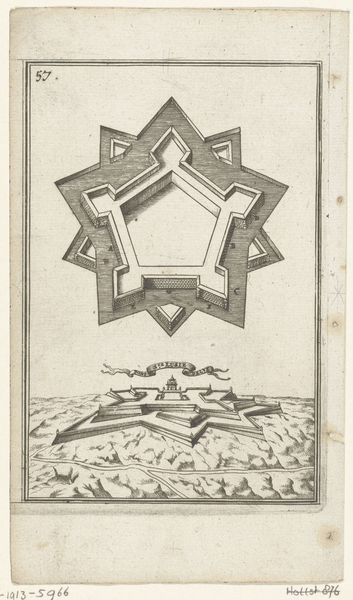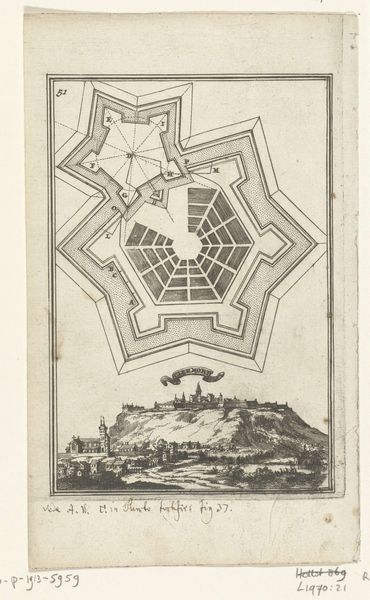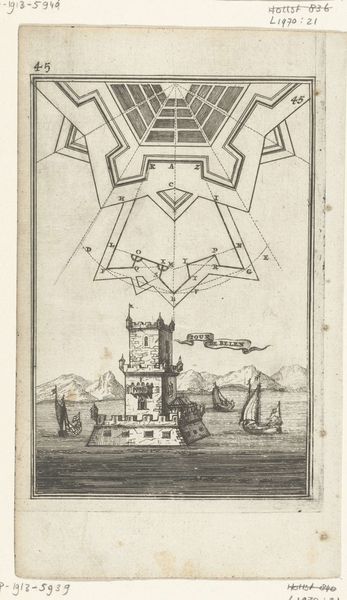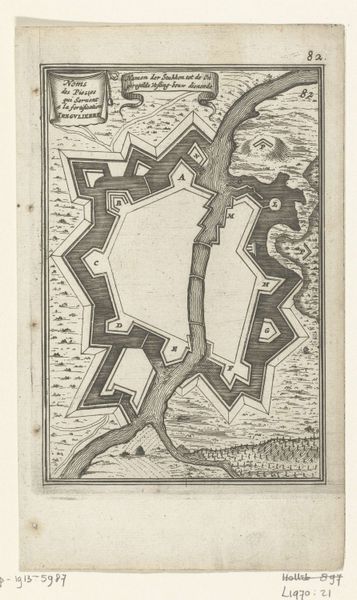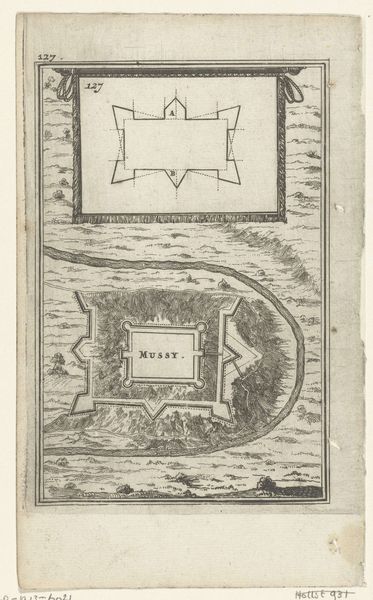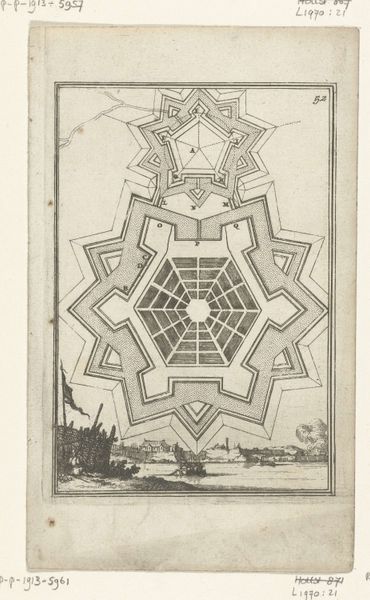
Illustratie voor 'Den Arbeid van Mars' van Allain Manesson Mallet 1672
0:00
0:00
romeyndehooghe
Rijksmuseum
drawing, print, ink, engraving
#
drawing
#
baroque
# print
#
old engraving style
#
river
#
form
#
ink
#
geometric
#
pen-ink sketch
#
line
#
cityscape
#
engraving
Dimensions: height 185 mm, width 112 mm
Copyright: Rijks Museum: Open Domain
Editor: Here we have an illustration by Romeyn de Hooghe from 1672, created with ink and engraving, titled "Illustration for 'The Labor of Mars' by Allain Manesson Mallet." It strikes me as so rigid and calculated. What do you see in this piece, considering the time it was made? Curator: Well, considering De Hooghe’s context as a key figure in Dutch printmaking during the Dutch Golden Age, this engraving offers a fascinating glimpse into the relationship between art, politics, and military power. It wasn't just decorative. How do you see the depiction of these fortifications fitting into broader social narratives of the 17th century? Editor: I guess the emphasis on geometry suggests a scientific or rational approach to warfare, perhaps even an idealized vision of control. It looks more like math than war. Curator: Precisely! These weren't just representations of forts; they were statements of power and engineering prowess. Consider the socio-political function of prints at the time. Who was the intended audience, and how might they have interpreted these images? It's a visual language designed to inspire confidence and awe. It also shapes a conceptual relationship between the State and War, rendering violence an architectural project. Editor: That’s a great point, I never really considered who would’ve been consuming something like this and *why*. It is pretty fascinating when you think of the engraving as propaganda, in a way. Curator: Exactly. This work, on closer inspection, reveals the complex relationship between art, war, and the projection of power during a tumultuous era. How the design itself projects power. Editor: Thinking about it that way, I can better appreciate how such a seemingly dry depiction actually reflects very human ambitions. Curator: Indeed, seeing the artist's influence on their reception and the social norms being represented here helped expand my view as well.
Comments
No comments
Be the first to comment and join the conversation on the ultimate creative platform.

